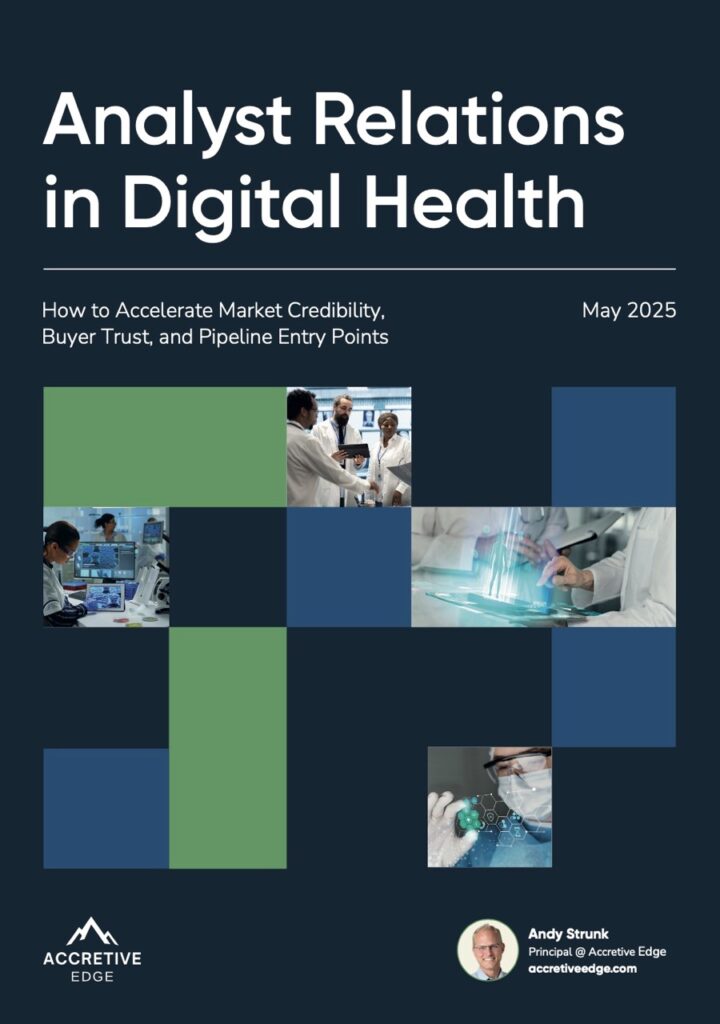WHITE PAPER
Analyst Relations in Digital Health: How to Accelerate Market Credibility and Build Buyer Trust
This report is for digital health teams navigating slow sales cycles, risk-averse buyers, and market categories that don’t quite exist yet. We break down how to use analyst relationships as a practical, commercial multiplier.
Download the report to learn:
- Why buyers trust analyst signal more than your deck
- How early-stage companies are showing up in KLAS, Gartner, and IDC
- What engagement paths matter — and what to skip
- How to prep for analyst briefings, reviews, and diligence
- A phased roadmap for using analyst relations to accelerate sales and funding


Not sure where to start? Most companies aren’t.
-
Digital health sales cycles still average 9 to 18 months
-
Nearly half of buyer stakeholders cite “unclear value” as the reason for passing
-
72% of health system CIOs rely on third-party validation during evaluation
Analyst influence isn’t hypothetical. It shows up in buyer conversations, diligence checklists, and investor pitch follow-ups.
What's inside:
A practical framework for analyst engagement — written for commercial leaders, not brand teams.
Andy Strunk, Principal @ Accretive Edge

Key questions we answer:
- A map of analyst firms by GTM stage
- Case-style breakdowns of engagement paths
- A step-by-step playbook for early-stage teams
- Briefing checklists and timelines you can reuse
This is for you if you’ve ever asked:
-
When do we reach out to Gartner or KLAS — and what do we say?
-
Is analyst engagement even worth it if we’re still pre-scale?
-
How do we show up credibly without a paid subscription?
-
What do analysts really want in a briefing or reference call?


